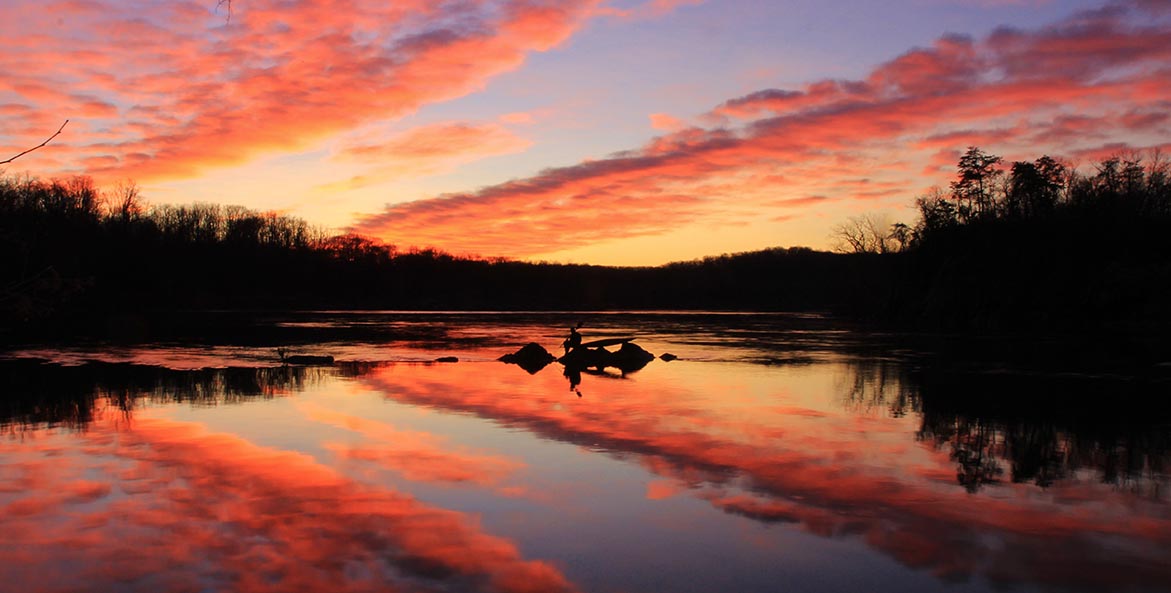This article was originally published as a Guest Commentary in the Baltimore Sun on October 31, 2023.
When Gov. Wes Moore became chair of the Chesapeake Bay Executive Council, he told the council’s members that he would lead with his heart on his sleeve but grounded by science and data. Pairing people-centric passion with science brings me hope.
After 40 years of effort, the bay and its rivers and streams are improving in many places. The resurgence of underwater grass beds at the mouth of the Susquehanna River and oyster reefs in Harris Creek on the Eastern Shore are sparkling examples of success. Long-term, the bay’s annual dead zone is shrinking. Yet these bright spots are complicated by setbacks elsewhere—losses of heat-sensitive eel grass in the southern bay, struggling striped bass populations, the fact that less than a third of the bay’s waters meet water quality standards while the bay partnership misses another deadline to reduce pollution.
As we reckon with these realities, the movement is also facing enormous challenges. Climate change is making restoration harder through rising water temperatures, extreme storms and sea level rise. With nearly 6 million more people living in the watershed today than in 1980, polluted runoff from urban and suburban areas is growing. Agriculture—the largest remaining source of pollution in the watershed—is intensifying in places like the Delmarva Peninsula.
Even so, I am more energized than ever that this is our chance for a modern environmental awakening. My optimism is rooted in recent studies showing the dead zone would be larger and striped bass habitat smaller without the work we’ve done so far. But moving beyond holding the line demands new approaches.
To succeed in the next chapter of bay-saving, we’re going to have to widen conservation’s historically narrow lens. We can’t focus so pointedly on trying to recreate the past that we neglect to build for the future—a future that recognizes that nature and human communities are intertwined.
We can create a watershed that is resilient and full of life. We can create food systems that pollute less while producing nutritious foods and supporting local economies. We can create cities and homes that have green spaces, use energy efficiently and produce as little waste as possible. We can have air that is safe to breathe and water that is safe to drink. We can do this not only in the face of a changing climate, but in ways that reduce climate change and its impacts. We can do this while honoring the heritage of our past. And we can do it for everyone.
But it is a future we have to actively choose when we design our communities and our infrastructure, manage our farms, run our businesses, educate the next generation and shape policy.
This is the task, and the opportunity, facing Gov. Moore, the executive council, the Bay Program partnership, and all of us who care about the bay.
Thankfully, we also have new science to guide us. In May, dozens of scientists who advise the Chesapeake Bay Program released a landmark report—known by its acronym CESR—that is the most comprehensive evaluation to date of what is working and what needs improvement.
The report underscores an urgent need to reinvent and reinvigorate restoration programs, especially the programs addressing pollution washing off agricultural and urban landscapes. Almost all progress to date has come from reducing pollution at wastewater treatment plants. Nearly all future progress must come from tackling complex, landscape-scale pollution.
The report also highlights opportunities to accelerate benefits for human and wildlife communities by focusing on shallow waters and local streams in addition to the bay’s deepest channel—the primary focus of restoration to date. We must also explicitly address climate change while ensuring efforts are inclusive and equitable. And it is critical that these changes strengthen, not undermine, accountability measures.
Standing on the shoulders of the environmental giants who got us here, we have a once-in-a-generation opportunity to create a healthy, resilient watershed in the face of a changing climate for everyone. But only if we act now, and only if we act together. As Gov. Moore said, this isn’t just about one state, one agency, or one organization; this is an “all of the above” situation. We need to use the science and the data. But we also need to use our heart—our passion, our energy, our compassion and our courage.




